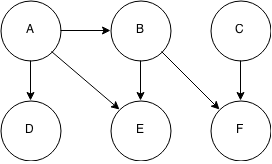
Please submit both code and writeup online by 1:30pm PDT on Monday, May 11, 2015. Please provide all code (sufficiently commented) so that we can run it ourselves. Submit your writeup as a PDF and limit to four pages with reasonable fonts and margins.
1.0 Read the paper Empirical Analysis of Predictive Algorithms for Collaborative Filtering. You need to read up to Section 2.2.1, and are encouraged to read further if you have time.
1.1 The dataset we will be using is a subset of the movie ratings data from the Netflix Prize. You can download it here. It contains a training set, a test set, a movies file, a dataset description file, and a README file. The training and test sets are both subsets of the Netflix training data. You will use the ratings provided in the training set to predict those in the test set. You will compare your predictions with the actual ratings provided in the test set. The evaluation metrics you need to measure are the Mean Absolute Error and the Root Mean Squared Error. The dataset description file further describes the dataset, and will help you get started. The README file is from the original set of Netflix files, and has been included to comply with the terms of use for this data.
1.2 Implement the collaborative filtering algorithm described in Section 2.1 of the paper (Equations 1 and 2; ignore Section 2.1.2) for making the predictions.
1.3 Modify your algorithm to incorporate "default vote" extension described in the first paragraph of Section 2.2.1 of the paper. Note the impact of this adjustment on the accuracy of your resulting method.
Extra-credit Add yourself as a new user to the training set. To do this, you will need to create a new user ID for yourself. Select some movies that you have seen among those in the training set, and add your ratings for them to the training set. Extend your system to output predictions for the movies you haven't rated, ranked in order of decreasing ratings. Do you agree with the predictions of your system? Check out some of the top ranked movies that you haven't seen (but only after you have finished work on the project).
Problem writeup:
2.1 You are on a chase plane trying to get a picture of the rocket booster stage attempting to land on an autonomous spaceport drone ship. Immediately as you spot the stage approaching, you snap a burst of shots using your camera with an advanced stabilization system.
A key question you want to answer now, is if the stage was descending exactly vertically or it was tilted. It appears vertical on your photo, but you are not sure if the stabilization system was operational at the moment of your shot.
Suppose:
2.1.1. What is the probability that your photo (appearing to be vertical) is of vertically descending stage?
2.1.2. You find other photos from the same burst. Three of them show the stage descending vertically, but on one of them it is tilted. You know that all five photos were taken fast enough so that the stage was not able to change its angle. What is the probability that the stage was descending vertically?
Hint: draw a Bayesian network.
2.2 Consider the following Bayesian network:

2.3 Consider a Bayesian network with four Boolean nodes A, B, C, and D, where A and B are parents of C, and C is the parent of D. Suppose you have a training set composed of the following examples in the form (A,B,C,D), with "?" indicating a missing value: